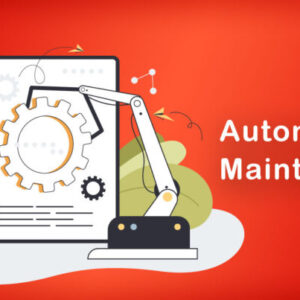In today’s competitive business environment, companies are constantly looking for ways to increase efficiency, improve quality, and reduce waste. One of the most effective methods to achieve these goals is through the implementation of the 5S methodology—a lean management tool that focuses on organizing and standardizing the workplace. However, while the 5S system can deliver significant improvements, its success largely depends on strong leadership. In this blog, we will explore the critical role that leadership plays in the successful implementation of 5S and how effective leaders can drive lasting change.
What is 5S?
Before diving into the leadership aspect, let’s briefly recap what 5S stands for. It is a five-step process designed to create an organized, efficient, and safe workplace:
- Sort (Seiri) – Remove unnecessary items and keep only what is essential.
- Set in Order (Seiton) – Organize the workplace so that tools and materials are easy to find and access.
- Shine (Seiso) – Clean the work environment and maintain cleanliness on a regular basis.
- Standardize (Seiketsu) – Establish standards to ensure consistency in practices and organization.
- Sustain (Shitsuke) – Create a culture of discipline where employees continuously follow 5S principles.
Although the 5S system is relatively simple in concept, its successful execution demands a strong commitment to change and continuous improvement.
Why Leadership is Crucial in 5S Implementation
Successful implementation of 5S is not just about following the steps in a checklist; it requires a deep cultural shift within the organization. This is where leadership comes into play. Strong leaders are essential for guiding teams, ensuring commitment, and maintaining momentum throughout the 5S journey. Below are key ways leadership impacts the success of 5S implementation.
1. Setting a Clear Vision and Objectives
Effective leaders are able to articulate a clear vision for 5S and communicate its importance to the entire organization. Leadership must explain not only what 5S is but also why it matters, aligning it with the company’s overall goals such as improving efficiency, reducing costs, enhancing safety, and boosting employee morale. By establishing clear objectives and explaining the long-term benefits, leadership can inspire buy-in from employees at all levels.
2. Building a Culture of Continuous Improvement
The 5S system is about more than just tidying up a workspace—it’s about fostering a mindset of continuous improvement. Leaders play a crucial role in instilling this mindset by setting the example, encouraging ongoing evaluation, and driving incremental improvements. When leadership prioritizes 5S as part of the company’s culture, employees are more likely to engage with the process and contribute to its success.
3. Allocating Resources and Support
For 5S to be implemented effectively, sufficient resources must be allocated—both in terms of time and tools. Leaders are responsible for providing the resources necessary for employees to implement the changes required. This might include investing in training, purchasing new equipment or tools, or setting aside time for employees to focus on 5S activities. When employees see that leadership is committed to providing the right tools and time, they are more likely to take the initiative and contribute meaningfully to the implementation process.
4. Empowering Employees and Encouraging Ownership
While leadership is crucial for setting the direction and providing support, it’s equally important for leaders to empower employees to take ownership of the 5S process. Employees are the ones who work on the frontlines, so their input is vital. Leaders can encourage ownership by involving employees in decision-making, recognizing their efforts, and creating teams dedicated to each of the 5S pillars. When employees feel they are part of the process, they are more likely to embrace 5S principles and apply them consistently.
5. Monitoring Progress and Ensuring Accountability
Implementing 5S requires ongoing monitoring and evaluation to ensure that the system is working and to identify areas for improvement. Leaders are responsible for establishing performance metrics and checking on progress. Regular audits, feedback sessions, and team reviews help ensure that the 5S process is not just a one-time event but a continual effort. Leadership can also create accountability by setting clear expectations and holding team members responsible for maintaining 5S standards.
6. Providing Recognition and Incentives
A critical aspect of sustaining the 5S system is motivation. Leaders play a pivotal role in recognizing the efforts of employees and celebrating milestones. Whether through formal awards, informal praise, or even small incentives, leaders can keep employees motivated and focused on maintaining the improvements achieved through 5S. Recognition boosts morale, reinforces the value of the 5S system, and encourages employees to continue to improve.
7. Leading by Example
One of the most effective ways leaders can drive 5S success is by leading by example. When employees see that leadership is actively participating in the 5S process—whether it’s helping to clean, organizing their workspace, or adhering to standards—it sets a powerful example. Leadership involvement shows that 5S is a priority for the entire organization, not just something imposed from above.
Overcoming Challenges
While leadership is vital for 5S success, the process is not without challenges. Resistance to change, a lack of time, and the difficulty of sustaining engagement can all impede progress. However, effective leaders can overcome these barriers by being persistent, patient, and adaptable. By staying focused on the long-term benefits, involving employees at every step, and making 5S a part of the company culture, leaders can ensure that the 5S system is successful and sustainable.
Conclusion
The role of leadership in 5S implementation cannot be overstated. Leaders provide the vision, resources, and support necessary to implement and sustain the system. They also create an environment where employees feel empowered and engaged in the process. When leadership is fully committed to the principles of 5S and actively participates in the process, the organization is more likely to experience improved efficiency, reduced waste, and a more engaged workforce. In the end, the success of 5S implementation is not just about cleaner, more organized workspaces; it’s about creating a culture of continuous improvement that drives long-term success for the organization.
By embracing their role as catalysts for change, leaders can ensure that 5S isn’t just a one-time initiative, but a lasting practice that contributes to the overall growth and success of the company.
















